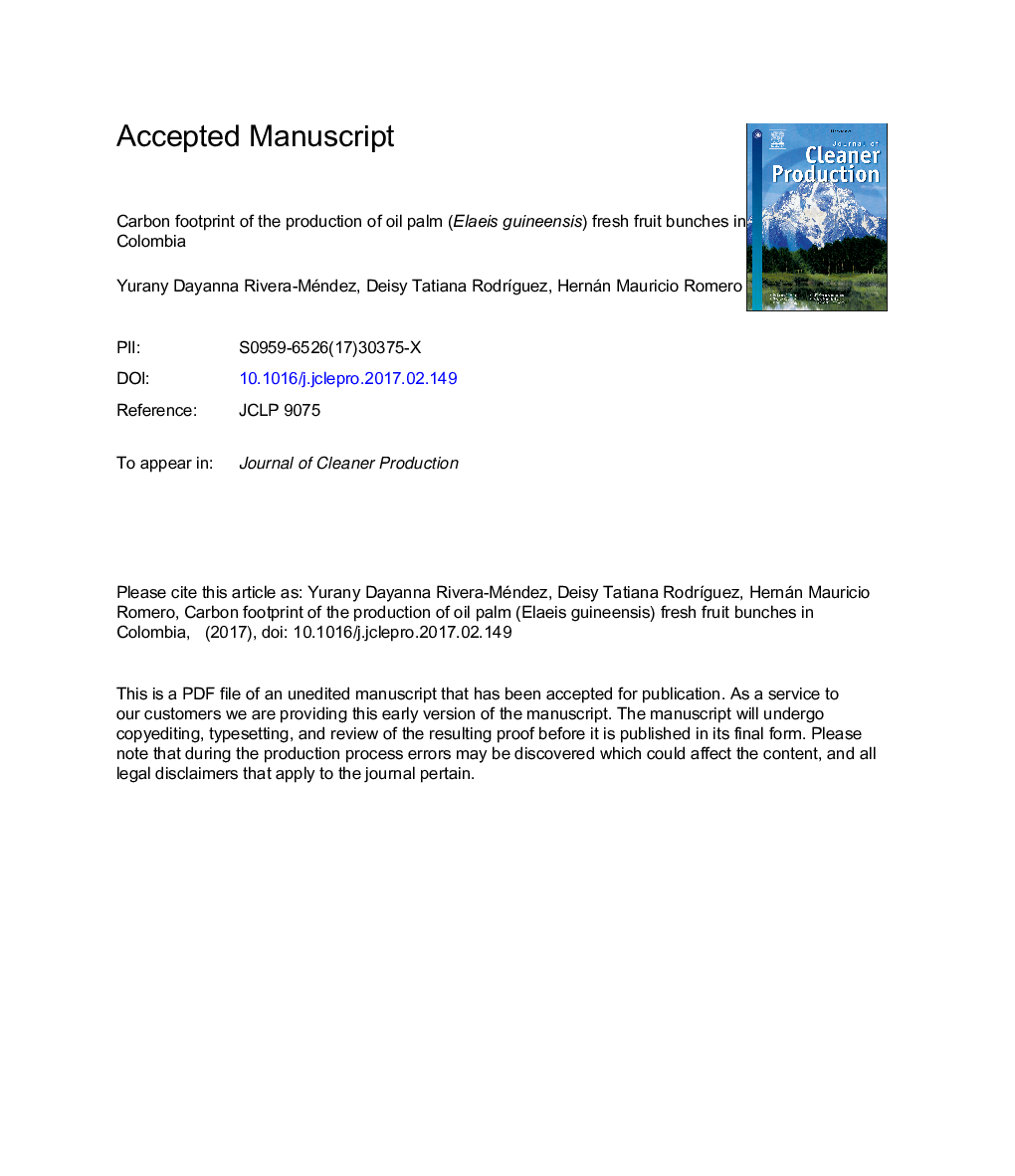| کد مقاله | کد نشریه | سال انتشار | مقاله انگلیسی | نسخه تمام متن |
|---|---|---|---|---|
| 5480773 | 1522104 | 2017 | 29 صفحه PDF | دانلود رایگان |
عنوان انگلیسی مقاله ISI
Carbon footprint of the production of oil palm (Elaeis guineensis) fresh fruit bunches in Colombia
دانلود مقاله + سفارش ترجمه
دانلود مقاله ISI انگلیسی
رایگان برای ایرانیان
کلمات کلیدی
موضوعات مرتبط
مهندسی و علوم پایه
مهندسی انرژی
انرژی های تجدید پذیر، توسعه پایدار و محیط زیست
پیش نمایش صفحه اول مقاله

چکیده انگلیسی
Oil palm is the major source of vegetable oil in the world, produced mainly by Malaysia and Indonesia. Colombia is the second largest producer outside Southeast Asia and the largest producer in South and Central America. The expansion of oil palm crop in Colombia has a great potential for reducing greenhouse gas emissions, because it is planted in areas covered by low biomass vegetation. The first step for reducing these greenhouse gas emissions is to quantify them, and the carbon footprint is the algebraic sum of the greenhouse gas sequestration and emissions caused directly or indirectly by an individual, organization or product for a defined period of time. For that, the objective of this study was to determine the carbon footprint of the crop stage, i.e of production of oil palm fresh fruit bunches in an experimental field, representative of a well managed plantation in Colombia. Following the Colombian Technical Standard NTC 6000, one ton of oil palm fresh fruit bunches was established as a functional unit; inputs, activities and processes directly or indirectly involved in the production of oil palm fresh fruit bunches were inventoried, and the carbon footprint balance between sequestration and greenhouse gas emissions was estimated using the Ecoinvent database and emission factors of the SimaPro 7.0 software. CO2 capture by the crop was higher than greenhouse gas emissions associated: for each ton of oil palm fresh fruit bunches produced, 606Â kg of CO2 were fixed. N2O was the most significant greenhouse gas emitted during the crop stage, and the activities in descending order that contributed most to the greenhouse gas emissions were the use of chemical nitrogen fertilizers, transport of bunches to the processing plant, land use change and the energy used in transport and tractor traction. Since carbon footprint is a benchmark for internal management or mitigation of greenhouse gas emissions, a mitigation plan was drawn up to improve the carbon balance, by increasing the use of organic fertilizers: planting oil palms on degraded land or with low biomass accumulation; using oil palm biodiesel as a substitute for fossil fuels; improving the yield of oil palm fresh fruit bunches through increased production efficiency; and by producing biochar at the time of replanting. These integrated strategies that in descending order have different effects into the carbon balance could increase the eco-efficiency of the oil palm in terms of carbon sequestration for Colombian oil palm agribusiness.
ناشر
Database: Elsevier - ScienceDirect (ساینس دایرکت)
Journal: Journal of Cleaner Production - Volume 149, 15 April 2017, Pages 743-750
Journal: Journal of Cleaner Production - Volume 149, 15 April 2017, Pages 743-750
نویسندگان
Yurany Dayanna Rivera-Méndez, Deisy Tatiana RodrÃguez, Hernán Mauricio Romero,